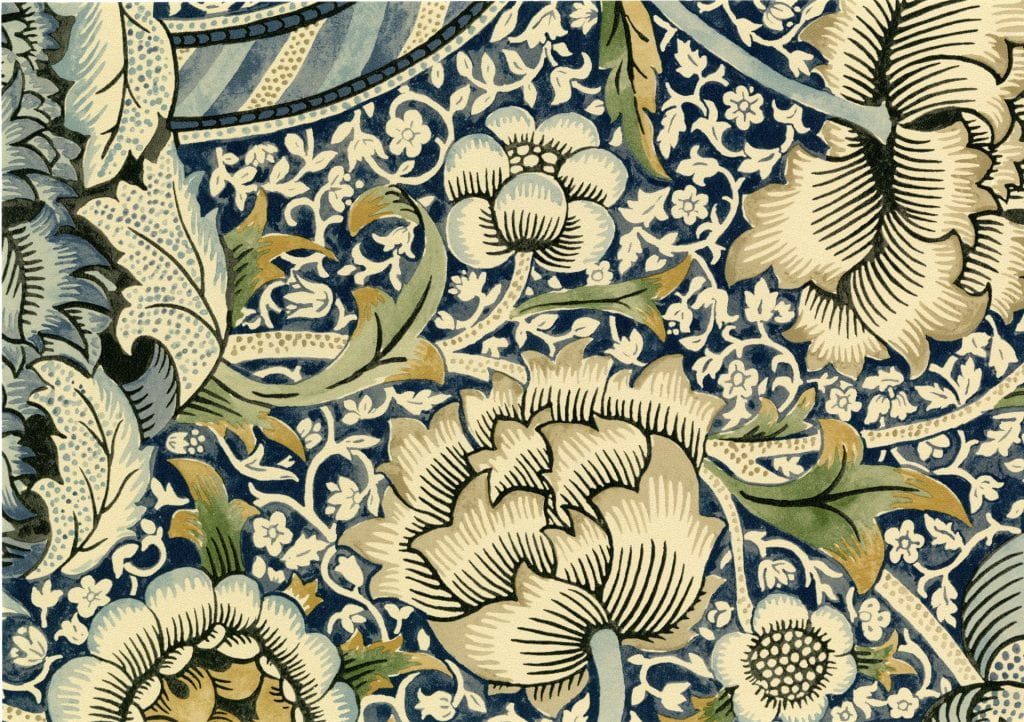‘Every common bush afire with God’: Divine Encounters in the Living World
The exhibition explores the intersection of religious and ecological concerns in nineteenth-century literature and art, from William Wordsworth to Gerard Manley Hopkins. You can read more about its content here. The exhibit was curated by Molly Lewis, a doctoral student of English at Baylor University during a ten-week summer internship through the Armstrong Browning Library.
How Shall We Live Now? Recognizing and Caring for the Natural World Where We Are
William Morris and John Ruskin were passionate advocates for attending to the natural world around them, from the shores of the Thames in London to the shores of Lake Coniston at Brantwood. But what mattered to writers and artists in nineteenth-century Britain may look very different for us in the places we live today. Part of recognizing the natural world means observing the unique beauties and vulnerabilities of the places we call home. In Waco, TX, home to the Armstrong Browning Library, there are many ways to respond to these artists’ call to recognize the beauty and dignity of nature, and respond with care:
Gerard Manley Hopkins’s “Binsey Poplars,” from Poems of Gerard Manley Hopkins, 1st Edition. London: Humphrey Milford, 1918.

Gerard Manley Hopkins’s “Binsey Poplars,” from Poems of Gerard Manley Hopkins, 1st Edition. London: Humphrey Milford, 1918.
If you’re moved by Gerard Manley Hopkins’s challenge to remember the lost Binsey Poplars, consider visiting the Carleen Bright Arboretum in Woodway. Part of the Arboretum’s mission and vision is to be “stewards of the natural environments and resources within its boundaries.” Seeing first-hand what this stewardship looks like for them provides a helpful—and beautiful—model for how to steward our own environments and resources.
William Morris was so committed to recovering the beauty of the Thames that he wrote a whole novel about it in News from Nowhere. The Brazos River could use some of Morris’s passion. Among their many campaigns for change, Keep Waco Beautiful hosts quarterly Brazos clean-up days. Try joining the next one and consider investing your time in some of their projects to beautify and restore Waco neighborhoods.
When we read Christina Rossetti’s words to “Tread softly!” because “all the earth is holy ground,” it can be difficult to imagine what that might look like practically in our daily lives—especially if we live in a city where beautiful landscapes are hard to come by. Mission Waco’s Urban REAP helps us think creatively about how we can use our resources in urban spaces, both responsibly and beautifully. Whether you live in the city or the country, your daily life relies on rural spaces—farm land, fields of cattle, waterways—increasingly at risk thanks to our industrialized agricultural system. World Hunger Relief provides educational encounters and partnership opportunities for those who would like to “tread softly” on the earth that sustains us.
What are some other ways you can recognize and care for the natural world you’re a part of?
Read more in this series of blog posts about the exhibit “‘Every common bush afire with God’: Divine Encounters in the Living World“:


